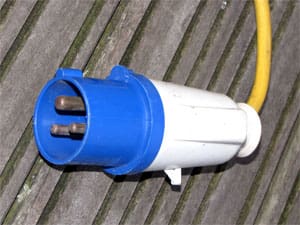To the editor: With few exceptions, the world standard in electricity is 230 volts at a frequency of 50 hertz. This standard doesn’t extend to the 230-volt household power plugs all being the same, but that is another story. Mercifully, most marinas use the same connector; however this is not the American one you are used to.
The power plug is not a problem. All over the world, whatever the appearance of the local power plug, it is always for sale locally. The 230 volts must be dealt with though. If it were 60 Hz, the obvious solution would be a transformer to step it down to 115 volts. With 50 Hz, you have two problems. Many American transformers are not designed to function with 50-Hz power and will overheat. If you do acquire a transformer in the U.S. for use in other countries, make sure it’s rated for 50 Hz. The other issue is whether you want to distribute transformed 115-volt, 50-Hz power to the sockets around your boat. While electronics these days seem happy with almost anything, motorized tools and appliances may be fussier.
If you are happy with 50-Hz power, in the U.K. it’s easy to find high power step-down transformers in all the tool shops. These units are not as easily found in the rest of Europe. This is because, by happy coincidence, the rules in the U.K. require outdoor construction to use 115-volt tools for safety reasons. You will still need to adapt the outlet on the transformer to your boat’s power socket. If you like this transformer option, bring an American marina-style power socket with you in order to make up an appropriate extension.
The ready availability of transformers notwithstanding, because of the 50-Hz issue, early in our offshore travels we installed a 230-volt battery charger. That way, we can make our own 115-volt, 60-Hz power with an inverter. All the power tools are happy!
Hot water is an issue as well. The typical heating element will max out the inverter if it is getting power from that source. The solution is to install a 230-volt heating element. If you choose to wire things up to power it directly from the shore power, you’ll have very fast hot water. Another way to use the 230-volt element is to power it from the inverter. At 115 volts, it will consume one-fourth of its rated power. In our case, this was a small enough load that our inverter could power it and our beefy 230-volt charger could put more into the batteries than the inverter was consuming.
For heat, buy a local electric heater and plug it directly into the shore power!
—Laurence Roberts, a retired airline pilot, and his wife Mary Anne Unrau, a former classical piano instructor, live aboard Traversay III, a custom steel Waterline 43 cutter.

